Numerical Simulation and Experimental Study of a Deep-Sea Polymetallic Nodule Collector Based on the Coanda Effect
Abstract
:1. Introduction
2. Attached Wall Jet Collector
2.1. Structural Composition
2.2. Working Principle
3. Numerical Method and Verification
3.1. Theory of Forces on Nodules in a Flow Field
3.2. Numerical Modeling
3.2.1. Model Simplification
3.2.2. Model Settings
3.2.3. Mesh Independence Study
3.3. Verification
3.3.1. Experimental Settings
3.3.2. Experimental Verification
4. Results and Analysis
4.1. The Impact of Collection Jet Flow Rate on Collection Rate
4.2. The Impact of Bottom Clearance on Collection Rate
4.3. The Impact of the Collection Nozzle Slant Angle on Collection Rate
5. Conclusions
- This study investigates the attached wall jet hydraulic ore-collecting device. A baffle is incorporated into the fundamental structural design of a single nozzle and a single surface to enhance the collection rate. By conducting a comparison between the numerical simulation and the experiment, it was determined that the maximum error of the collection rate was below 10%.
- The collection of nodules has two phases: extraction and transportation. The flow rate of the collection jet and the bottom clearance have a substantial impact on the collection of nodules. Furthermore, there exists a strong association between these two factors. The collection jet flow rate required increases proportionally with the bottom clearance, based on satisfying the 90% collection rate index. At a bottom clearance of 10 mm, the collection jet flow rate needs to be 8 m/s. However, when the bottom clearance grows to 30 mm, the required collection jet flow rate increases to 10 m/s.
- The slant angle of the collection nozzle does not have a substantial impact on the rate of collection. It is recommended to set the collection nozzle slant angle at 35° to reduce energy loss.
Author Contributions
Funding
Data Availability Statement
Acknowledgments
Conflicts of Interest
References
- Cao, L.; Yang, Z.; Liao, S.; Xu, Q. Analysis on Ore-controlling Factors of Submarine Hydrothermal Polymetallic Sulphide Deposits. Mod. Min. 2019, 35, 6–11+42. [Google Scholar]
- Wang, F.; He, G.; Yao, H.; Deng, X. The progress in the study of REE-Rich deep-sea sediments. Geol. China 2017, 44, 449–459. [Google Scholar]
- Liu, S.; Liu, C.; Dai, Y. Status and Progress on Researches and Developments of Deep Ocean Mining Equipments. J. Mech. Eng. 2014, 50, 8–18. [Google Scholar] [CrossRef]
- Li, X. Preliminary Discussion on Chinese Deep-sea Polymetalllic Nodules Pilot Mining Test. Ocean Dev. Manag. 2017, 34, 63–66. [Google Scholar]
- Wu, C.; Liu, S.; Dai, Y. Exploitation Situation and Prospect Analysis of Seafloor Polymetallic Sulfides. Mar. Sci. Bull. 2008, 27, 101–109. [Google Scholar]
- Weaver, P.P.; Billett, D. Environmental impacts of nodule, crust and sulphide mining: An overview. In Environmental Issues of Deep-Sea Mining: Impacts, Consequences and Policy Perspectives; Springer: Berlin/Heidelberg, Germany, 2019; pp. 27–62. [Google Scholar]
- Miao, Y.; Xiguang, D.; Huiqiang, Y.; Yonggang, L. The progress in the investigation and study of global deep-sea polumetallic nodules. Geol. China 2018, 45, 29–38. [Google Scholar]
- Leng, D.; Shao, S.; Xie, Y.; Wang, H.; Liu, G. A brief review of recent progress on deep sea mining vehicle. Ocean Eng. 2021, 228, 108565. [Google Scholar] [CrossRef]
- Zhao, G. Research on Hydraulic Collecting Methods and Fluid particle Dynamic Characteristics for Deep-Sea Mining. Ph.D. Thesis, Shanghai Jiao Tong University, Shanghai, China, 2022. [Google Scholar]
- Alhaddad, S.; Mehta, D.; Helmons, R. Mining of deep-seabed nodules using a coandă-effect-based collector. Results Eng. 2023, 17, 100852. [Google Scholar] [CrossRef]
- Brockett, T. Nodule collector subsystems. In Proceedings of the Workshop on Proposed Technologies for Deep Seabed Mining of Polymetallic Nodules: International Seabed Authority Meeting, Kingston, ON, Canada, 9–27 August 1999; pp. 67–93. [Google Scholar]
- Kim, S.; Cho, S.-g.; Lee, M.; Kim, J.; Lee, T.H.; Park, S.; Hong, S.; Kim, H.-W.; Min, C.-H.; Choi, J.-S. Reliability-based design optimization of a pick-up device of a manganese nodule pilot mining robot using the Coandă effect. J. Mech. Sci. Technol. 2019, 33, 3665–3672. [Google Scholar] [CrossRef]
- Orcutt, B.N.; Bradley, J.A.; Brazelton, W.J.; Estes, E.R.; Goordial, J.M.; Huber, J.A.; Jones, R.M.; Mahmoudi, N.; Marlow, J.J.; Murdock, S. Impacts of deep-sea mining on microbial ecosystem services. Limnol. Oceanogr. 2020, 65, 1489–1510. [Google Scholar] [CrossRef]
- Boetius, A.; Haeckel, M. Mind the seafloor. Science 2018, 359, 34–36. [Google Scholar] [CrossRef]
- Elerian, M.; Alhaddad, S.; Helmons, R.; van Rhee, C. Near-field analysis of turbidity flows generated by polymetallic nodule mining tools. Mining 2021, 1, 251–278. [Google Scholar] [CrossRef]
- Wang, P.-J.; Li, L.; Wu, J.-B. Research on the lightweight structural optimization design of the front collector of the polymetallic nodule miner. Ocean Eng. 2023, 267, 113275. [Google Scholar] [CrossRef]
- Zhao, G.; Xiao, L.; Hu, J.; Liu, M.; Peng, T. Fluid flow and particle motion behaviors during seabed nodule pickup: An experimental study. Int. J. Offshore Polar Eng. 2021, 31, 210–219. [Google Scholar] [CrossRef]
- Cho, S.-g.; Park, S.; Oh, J.; Min, C.; Kim, H.; Hong, S.; Jang, J.; Lee, T.H. Design optimization of deep-seabed pilot miner system with coupled relations between constraints. J. Terramech. 2019, 83, 25–34. [Google Scholar] [CrossRef]
- Rodman, L.C.; Wood, N.; Roberts, L. Experimental investigation of straight and curved annular wall jets. AIAA J. 1989, 27, 1059–1067. [Google Scholar] [CrossRef]
- Trancossi, M.; Dumas, A.; Vucinic, D. Mathematical Modeling of Coanda Effect; 0148-7191; SAE Technical Paper; SAE International: Warrendale, PA, USA, 2013. [Google Scholar]
- Jia, H.; Yang, J.; Su, X. Numerical study on coarse granular flow and performance characteristics of the Coandă effect-based collector for deep sea mining. Appl. Ocean Res. 2024, 148, 104033. [Google Scholar] [CrossRef]
- Zhang, B.; Zhao, G.; Xiao, L. Optimization of Geometrical Parameters of Coandă-effect-based Polymetallic Nodule Collection Device. J. Shanghai Jiaotong Univ. 2023, 1–15. [Google Scholar] [CrossRef]
- Yang, Q.; Liu, S.; Jiang, X.; Liu, G.; Xia, J. Parameter matching of deep-sea polymetallic nodule collection device based on the Coandǎ effect. Ocean Eng. 2023, 41, 181–192. [Google Scholar] [CrossRef]
- Kundu, P.K.; Cohen, I.M.; Dowling, D.R. Fluid Mechanics; Academic Press: Cambridge, MA, USA, 2015. [Google Scholar]
- Mei, R. An approximate expression for the shear lift force on a spherical particle at finite Reynolds number. Int. J. Multiph. Flow 1992, 18, 145–147. [Google Scholar] [CrossRef]
- Oesterlé, B.; Dinh, T.B. Experiments on the lift of a spinning sphere in a range of intermediate Reynolds numbers. Exp. Fluids 1998, 25, 16–22. [Google Scholar] [CrossRef]
- Dreiseitl, I. About geotechnical properties of the deep seabed polymetallic nodules. In Proceedings of the 18th International Conference on the Transport and Sedimentation of Solid Particles, Prague, Czech Republic, 11–15 September 2017; pp. 11–15. [Google Scholar]
- Zenhorst, J. Degradation of Poly-Metallic Nodules in a Dredge Pump. Master’s Thesis, Delft University of Technology, Delft, The Netherlands, 2016. [Google Scholar]




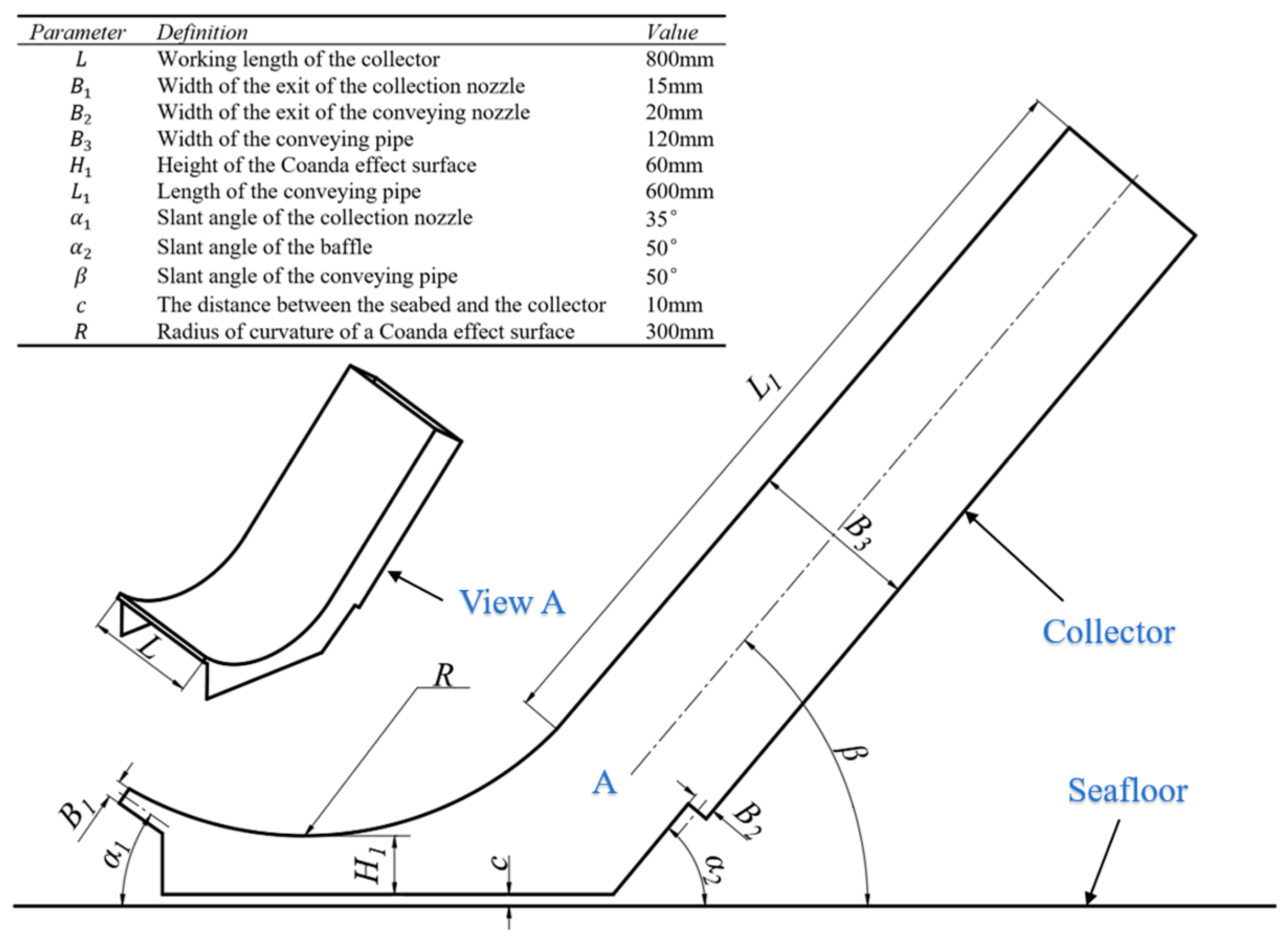
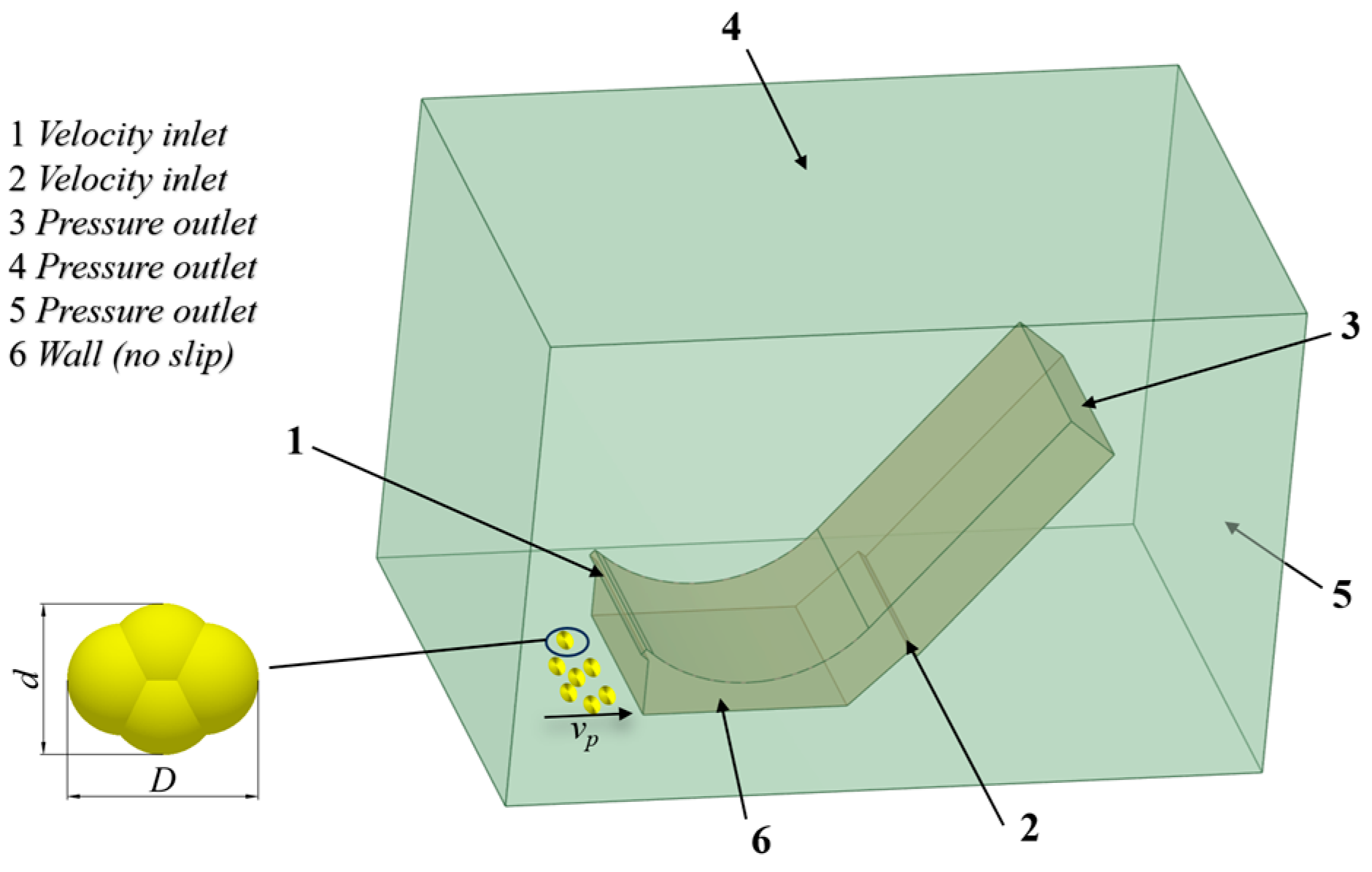
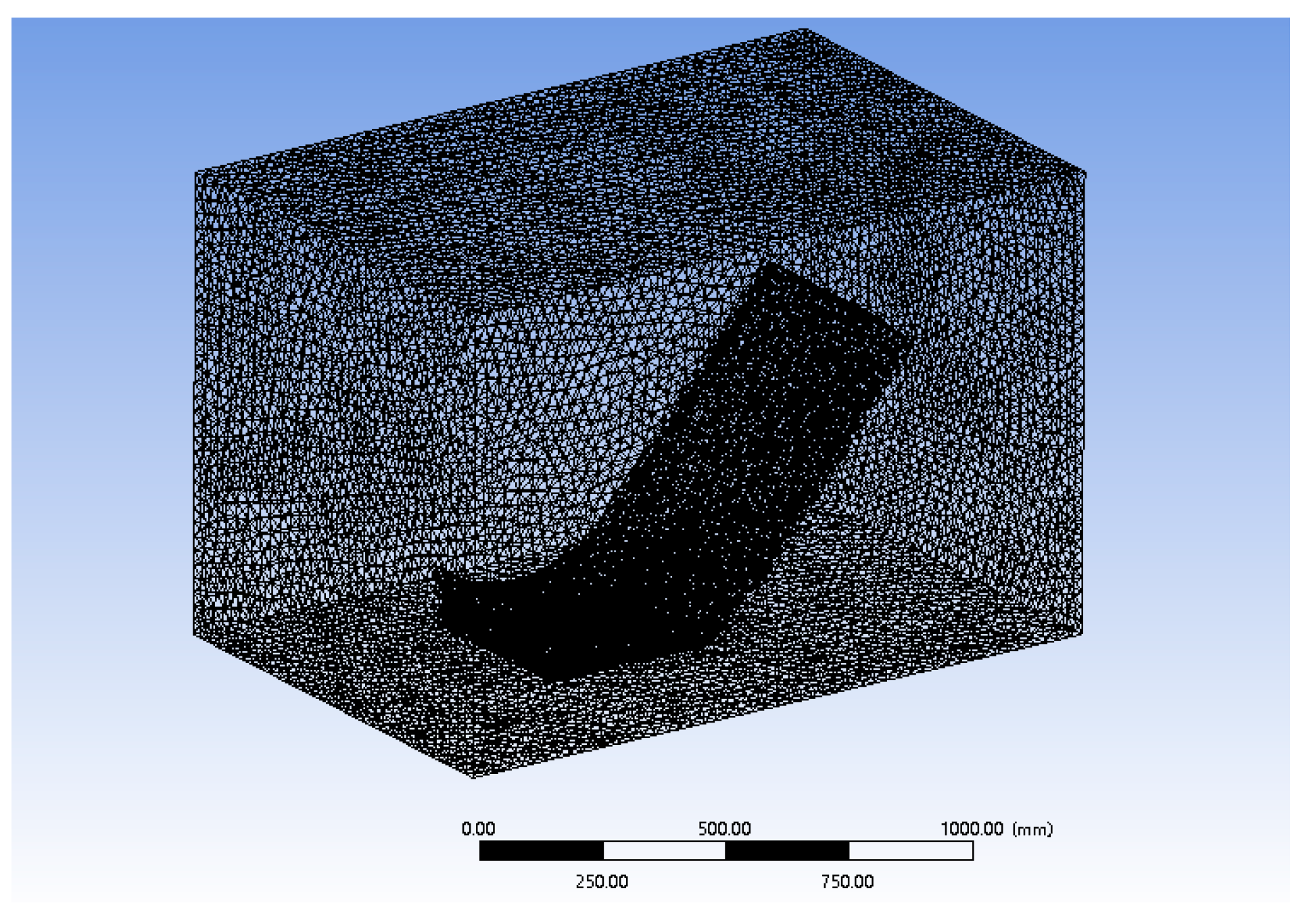



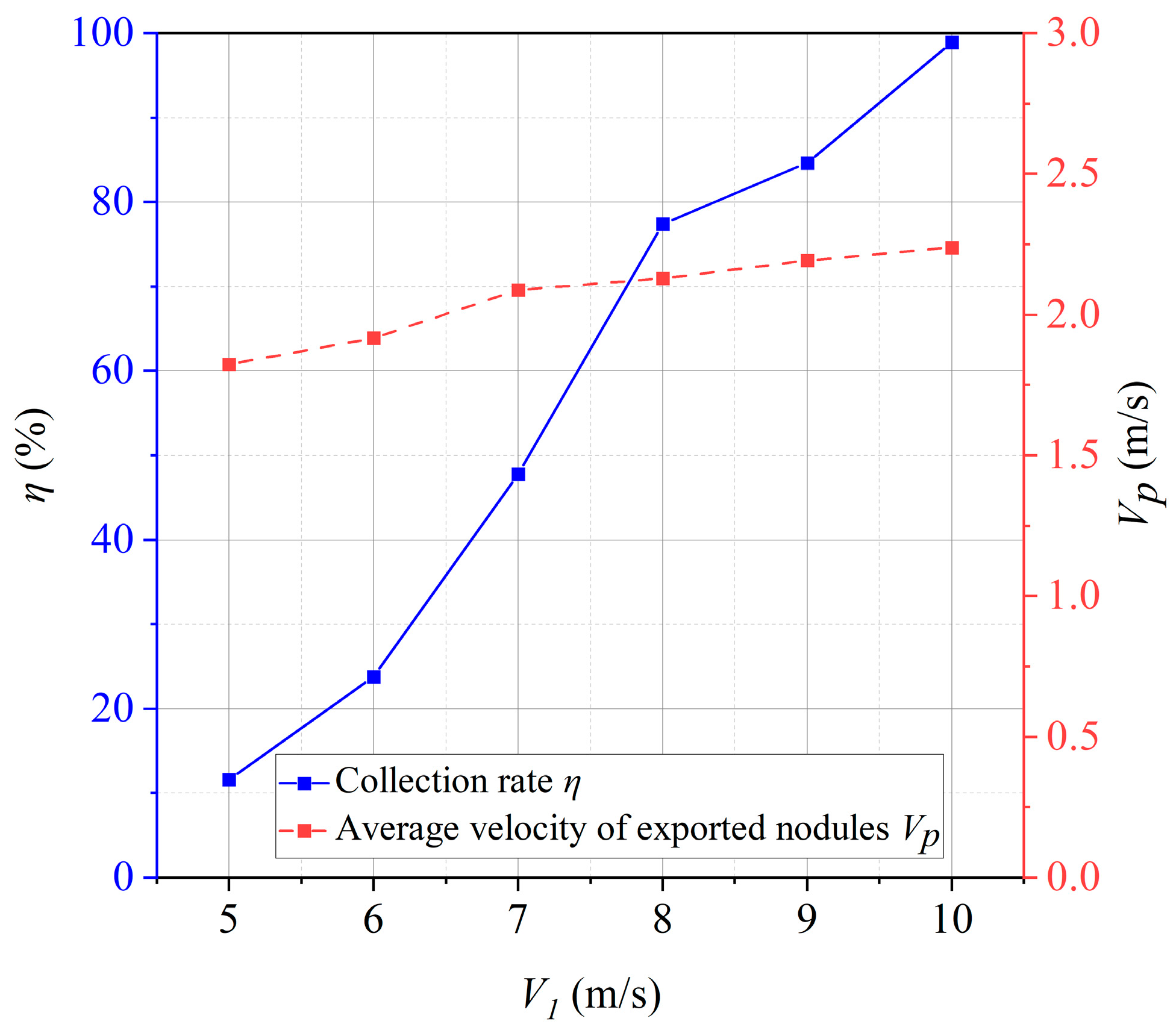

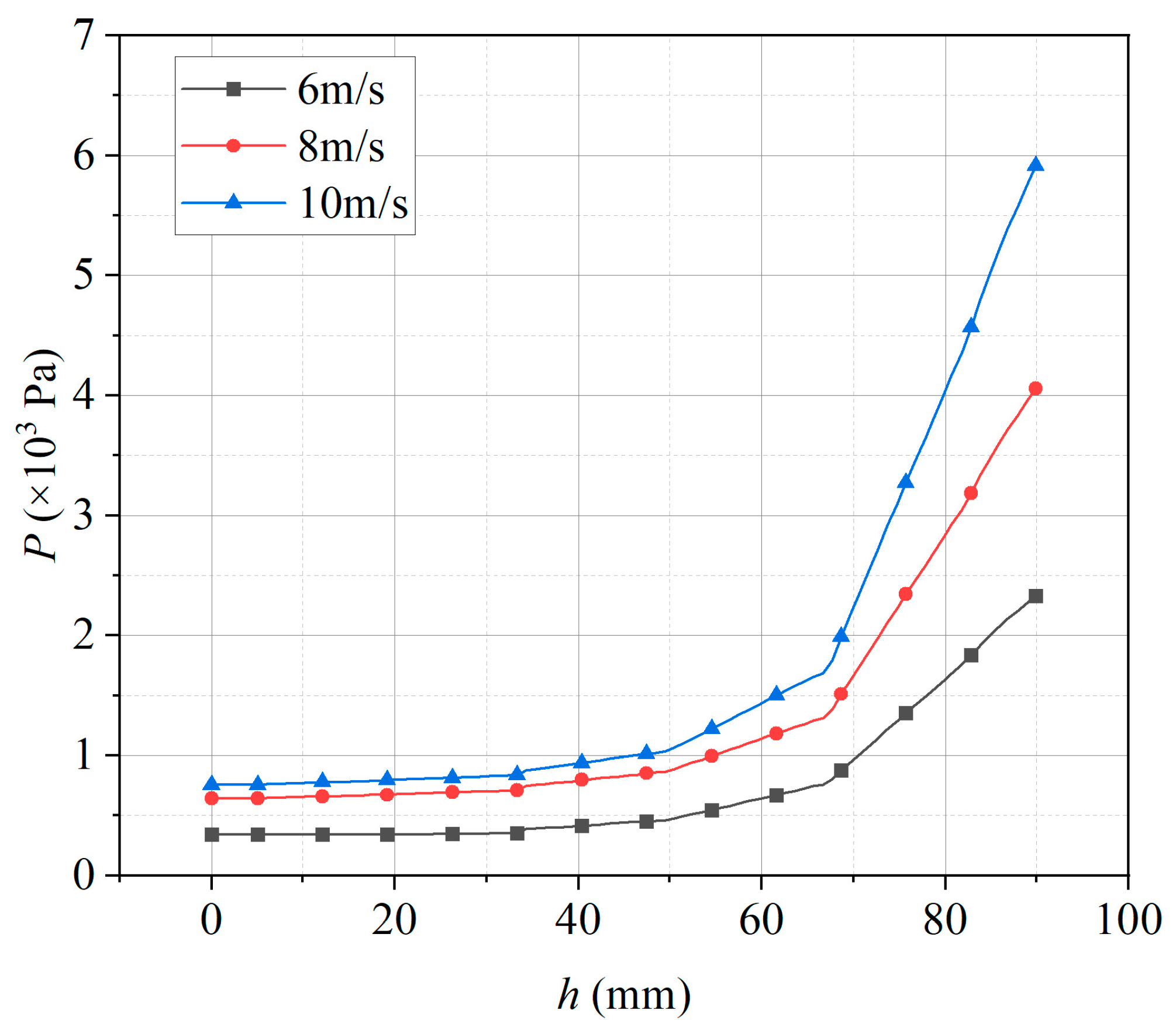



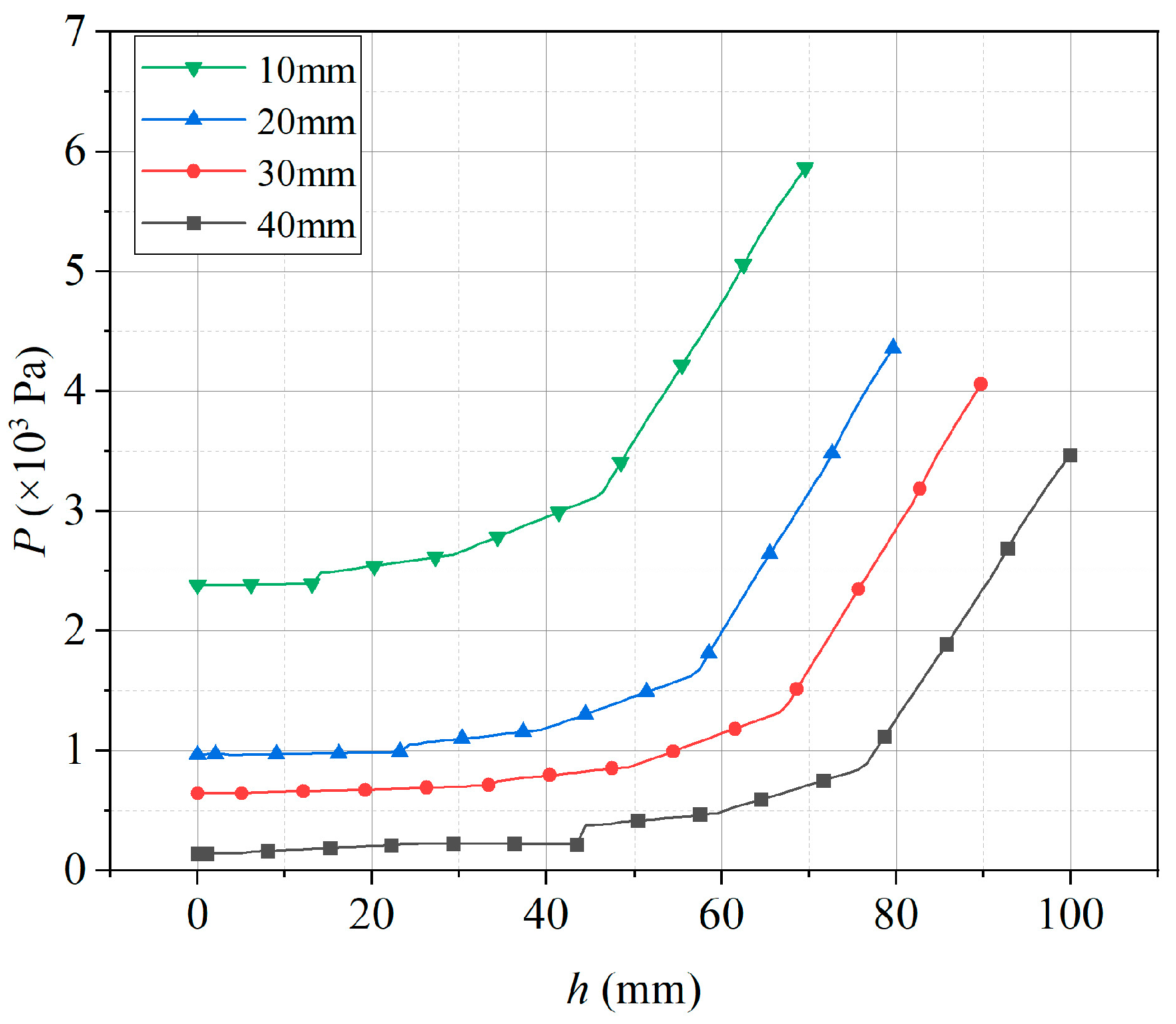

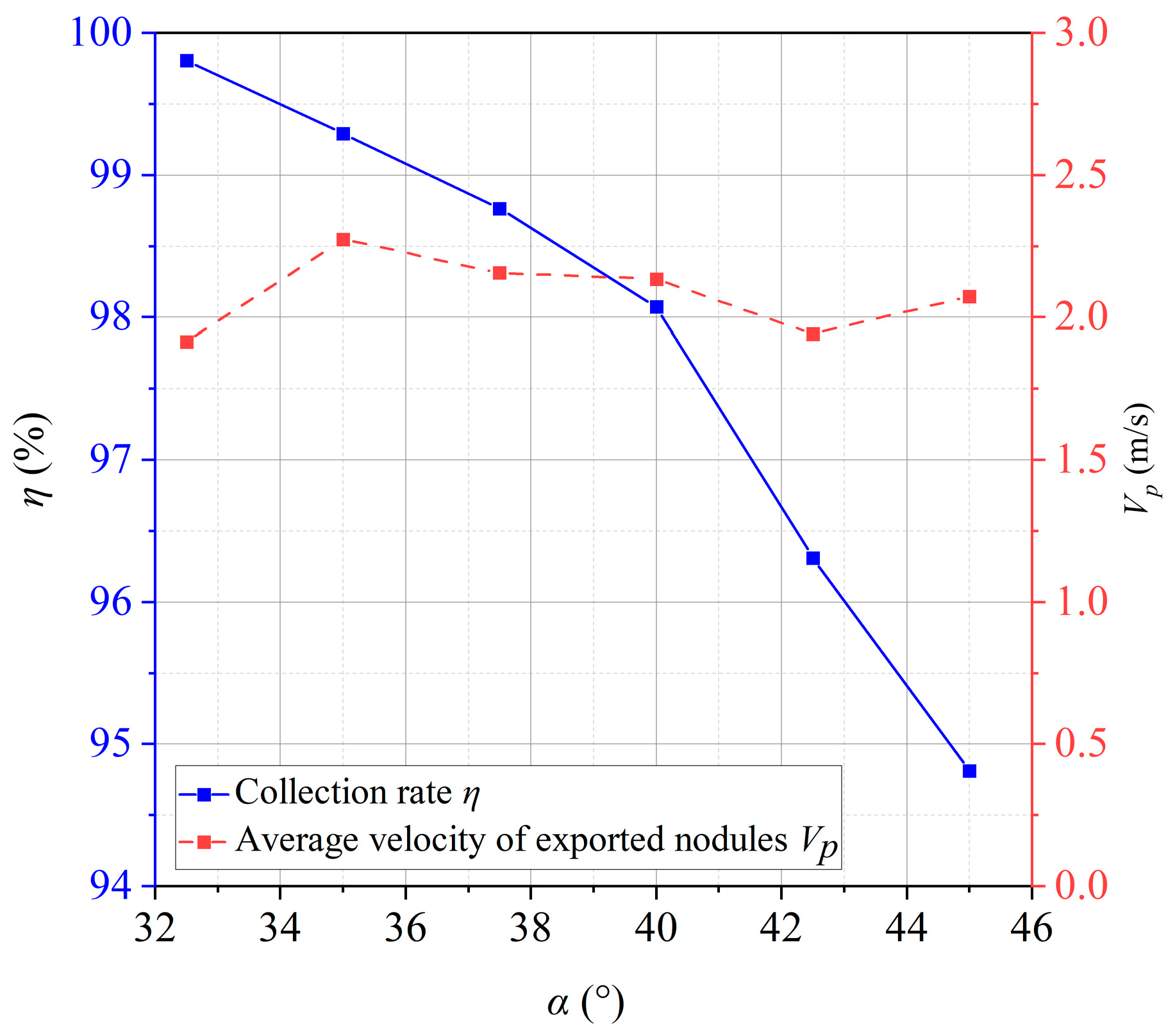



| Serial Number | Number of Grids | Minimum Pressure (Pa) | ||
|---|---|---|---|---|
| Inner Flow Field | Outside Flow Field | Total | ||
| 1 | 494,459 | 261,942 | 756,402 | −6985 |
| 2 | 582,104 | 440,665 | 1,022,769 | −7446 |
| 3 | 637,896 | 594,722 | 1,232,618 | −7328 |
| 4 | 699,388 | 838,159 | 1,537,547 | −7369 |
| Number | Collection Jet Flow Rate (m/s) | Bottom Clearance (mm) | Collection Rate | Error | |
|---|---|---|---|---|---|
| Experiment | Simulation | ||||
| A1 | 5 | 10 | 67.3% | 70.8% | −3.5% |
| A2 | 6 | 10 | 82.8% | 81.4% | 1.4% |
| A3 | 7 | 10 | 86.7% | 87.1% | −0.4% |
| A4 | 8 | 10 | 91.6% | 94.0% | −2.4% |
| A5 | 9 | 10 | 93.2% | 94.1% | −0.9% |
| A6 | 10 | 10 | 95.5% | 94.9% | 0.6% |
| B1 | 8 | 5 | 95.6% | 99.2% | −3.6% |
| B2 | 8 | 10 | 91.8% | 99.1% | −7.3% |
| B3 | 8 | 15 | 91.7% | 92.1% | −0.4% |
| B4 | 8 | 20 | 80.3% | 87.7% | −7.4% |
| B5 | 8 | 30 | 70.6% | 74.5% | −3.9% |
| B6 | 8 | 40 | 40.7% | 48.1% | −7.4% |
Disclaimer/Publisher’s Note: The statements, opinions and data contained in all publications are solely those of the individual author(s) and contributor(s) and not of MDPI and/or the editor(s). MDPI and/or the editor(s) disclaim responsibility for any injury to people or property resulting from any ideas, methods, instructions or products referred to in the content. |
© 2024 by the authors. Licensee MDPI, Basel, Switzerland. This article is an open access article distributed under the terms and conditions of the Creative Commons Attribution (CC BY) license (https://creativecommons.org/licenses/by/4.0/).
Share and Cite
Li, Y.; Han, Z.; Li, Z. Numerical Simulation and Experimental Study of a Deep-Sea Polymetallic Nodule Collector Based on the Coanda Effect. Minerals 2024, 14, 915. https://doi.org/10.3390/min14090915
Li Y, Han Z, Li Z. Numerical Simulation and Experimental Study of a Deep-Sea Polymetallic Nodule Collector Based on the Coanda Effect. Minerals. 2024; 14(9):915. https://doi.org/10.3390/min14090915
Chicago/Turabian StyleLi, Yan, Zhibin Han, and Ziyuan Li. 2024. "Numerical Simulation and Experimental Study of a Deep-Sea Polymetallic Nodule Collector Based on the Coanda Effect" Minerals 14, no. 9: 915. https://doi.org/10.3390/min14090915





